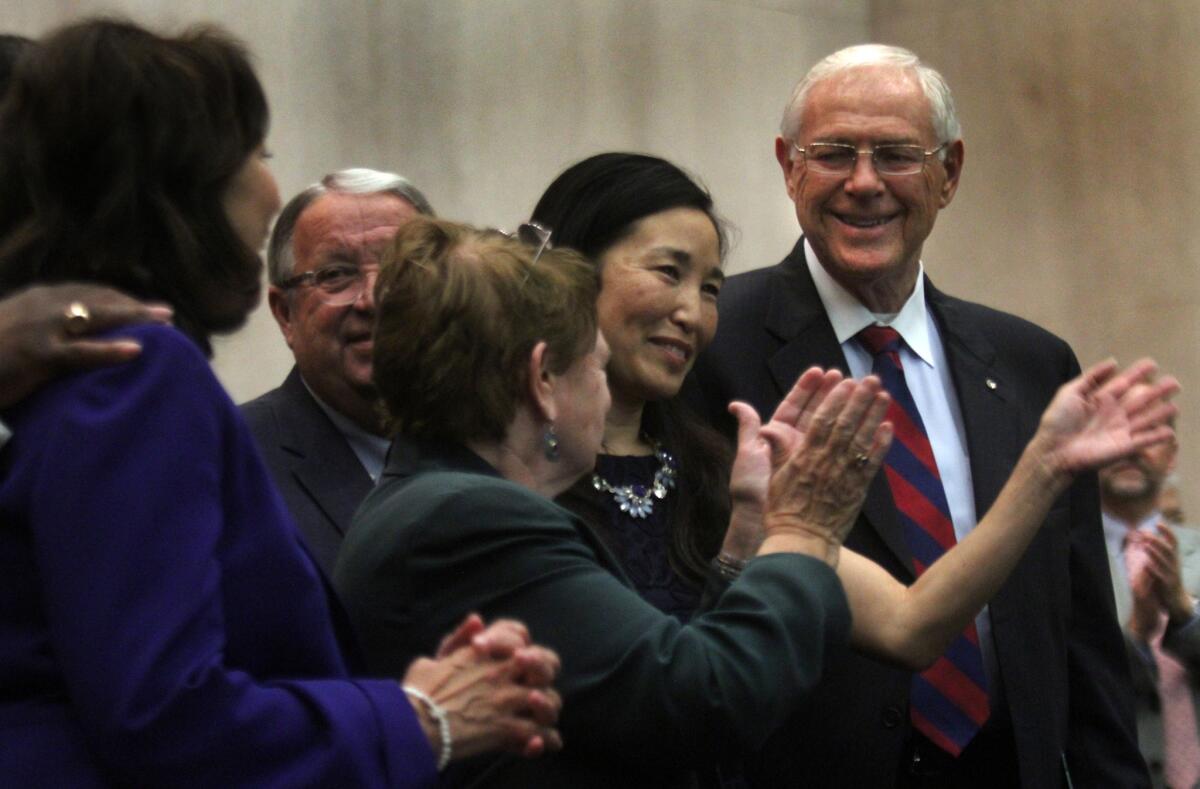L.A. County says thanks but no thanks to grand jury recommendations on governance structure

Los Angeles County supervisors said they won’t act on civil grand jury recommendations that they put measures before voters to increase the size of the county governing board and switch from an appointed to an elected executive.
Last year, the supervisors approved sweeping changes in the county’s governance structure, weakening the role of the county chief executive and giving themselves direct control over department heads.
The restructuring reversed changes the board had made in 2007 that gave the chief executive more power over the day-to-day operations of departments, including the authority to hire and fire department heads with board approval.
A recent report issued by the Los Angeles County Civil Grand Jury was critical of the return to greater board control, saying it has led to micro-managing by the supervisors that could create difficulties in attracting high-quality candidates for administrative positions.
The grand jury wrote that the board “intended that the direct communication between it and county departments would lead to more efficient conduct of public business.” But under the new structure, board “motions proliferate … and departments find it difficult to adjust to [supervisors’] constantly changing priorities,” the panel wrote.
The report added that the supervisors’ “direct decision making approach is not limited at the management level, but in some cases reaches down to the lowest levels of county operations.”
The panel recommended that the supervisors prepare to place measures before voters on the 2020 ballot that would amend the county charter to change the chief executive position from an appointed to an elected one, and expand the number of seats on the board from five to 11.
The switch to an elected chief executive has been proposed before, most recently by former Supervisor Zev Yaroslavky. The board has also fended off several attempts over the years to expand the number of seats. Each of the five supervisors represents a district of about 2 million people.
In a formal response to the grand jury report approved by the supervisors Tuesday without discussion, they said they will not act on either of the recommendations.
The question of an elected vs. appointed chief executive is a “policy decision for the Board of Supervisors,” who chose to stick with an appointed executive after “consideration and deliberation,” they said.
The response added that the board had found that the stronger-chief-executive system “had negative consequences, the main one being, it created distance between Department Heads and the Board of Supervisors, thereby impeding communication and the ability to address some of the County’s most complex challenges.”
“The governance structure adopted last year has reduced bureaucracy, eliminated the distance between the Board and Department Heads, and has already shown signs of significant improvement in the effectiveness of communication between the Board and Department Heads,” the response said.
County officials cited the creation of a comprehensive plan to address homelessness, the merger of three county health departments, and a multi-department response to the Aliso Canyon gas leak as examples of the new system at work.
In their response to the recommendation to expand the number of seats on the board, the supervisors noted that there is a bill pending in the state Legislature that would expand the number of governing board seats in certain counties, including Los Angeles, from five to seven.
“As such, there does not appear to be a need to place a separate measure before the electorate,” they wrote. “However, even if there was a need, support for this proposal seems to be lacking both within the county and throughout the state given that similar proposals have been rejected (both in the County and Statewide) on at least five separate occasions.”
Supervisor Michael D. Antonovich said in a statement afterward that “bigger government does not mean better government. If bigger government was the answer, then the City of Los Angeles, with its extra council members, would be the most efficient, responsive and cost-effective municipality in the county.” The L.A. City Council has 15 members.
The most recent legislative effort to expand the board was introduced by State Sen. Tony Mendoza (D-Artesia), who said it would help expand minority representation on the board, but the bill has stalled for at least the rest of the year.
Twitter: @sewella
More to Read
Sign up for Essential California
The most important California stories and recommendations in your inbox every morning.
You may occasionally receive promotional content from the Los Angeles Times.











